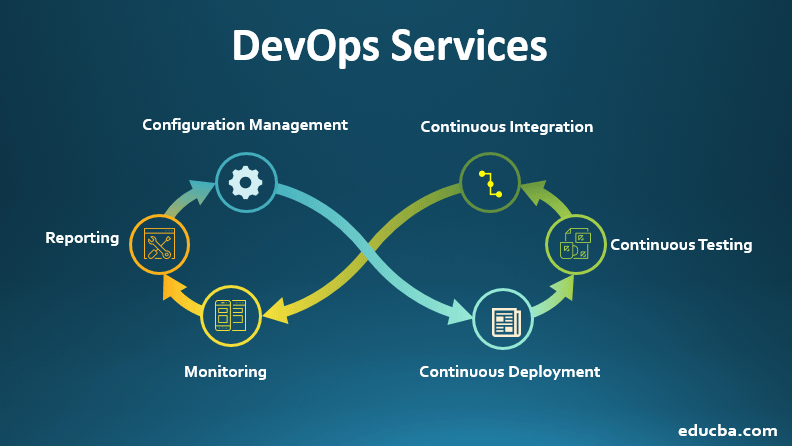What are DevOps Services
DevOps creates a niche or environment that emphasizes bringing together the Development and operational team. Automation is a good add-on for continuous software development and delivery. Working on DevOps services continuously and incrementally can easily achieve the main goal of building, testing, and releasing software.
Adopting DevOps as a service can encounter some prime challenges, such as:
- Time and cost trade-off in terms of release management and overall project management.
- Deployment transformation is even for a single change in the deployment phase for a project during the project.
- At the time of long release duration and failed release due to bugs, i.e., some unpredictable releases.
- Repetitive procedures and slowness while performing processes manually.
- Breakdown of the system at each phase of Development, testing, and production environments, i.e., inconsistencies in the background.
Application Objectives of DevOps Services
Let’s see the objectives of DevOps Services:
The key objective is concentrating on the projects or the fundamental business requirements.
- Analysis: Analysis of the fundamental business requirement and then gathering the necessary information or data.
- Design: Putting all the gathered data into a proper format and proceeding with the development activity.
- Development Teams Should Develop Code: Optimized and ready to move codes.
- Compilation: Simultaneous compilation of codes to keep a check on the beauty of the code.
- Test: Without this phase, any software product is not ready for deployment; therefore, it is very much needed to go through testing in each step.
How is DevOps Beneficial as a Service?
Given below shows how DevOps is beneficial as a service:
- Configuration Management (Source Control): Git, SVN, and Bitbucket are complete source control. Configuration management tools that help create repositories for all the codes and scripts to check in or check out at the time of release or build.
- Continuous Integration (Build Automation): Tools like Jenkins have come a long way to manage all the builds. Then automation is another aid for integrating all the forms with all new features and plugins already available within the tool.
- Continuous Testing (Test Automation): Test automation includes many tools like Selenium, PyCharm for Python testing, and NG Test. These tools take entire builds as input and generate the output for release with the help of Allure report and other report generation tools.
- Continuous Deployment: Continuous deployment here refers to tools like Docker and Kubernetes, which involve containerization to deploy the apps using these tools.
- Environment Provisioning: It is all related to infrastructure building and allocation of resources with the reuse of all the resources within the infrastructure; the use of a hypervisor can also be considered. Users can use tools like OpenStack and AWS for provisioning resources.
- Monitoring: Ansible and helm charts can be used for monitoring, depending on the type of business the actual tool project needs.
- Reporting: Raygun, an excellent reporting tool, suggests using its platform to check the software’s health and serve as a crash reporting platform.
Scenarios for all objectives of DevOps as a Service
Benefits of Opting for DevOps as a Service
The mentioned benefits are given below:
- Qualitative or Improved Software: Many DevSecOps practices and others are associated with DevOps as a service.
- Improved Stability of Releases: If incremental or continuous integration is done, the software builds will ultimately be stable and bug-free.
- Improved Deployment Quality: Frequent deployments help enhance the quality of deployment activity and the entire DevOps service.
- Synchronized and Friendly Niche or Environment: Synchronized environment here refers to the Development of software, followed by testing, staging, and production-ready.
- Lessens the Communication Gap: These services erase the gap or the bridge between Development and operational teams.
- Improve Productivity: With Continuous integration and deployment, overall productivity is what the market demands.
Conclusion
There is a criticism or drawback on the same DevOps as a service that is somewhat like any cloud computing, such as the reliability of the end customers on the service provider’s ability to avoid server malfunctioning. Specific to DevOps as a service, compared to traditional cloud computing, it is just like we are providing some rent to perform all the activities we can do using data as a service. For example, Oracle, as a DevOps service, will create a lot of cross-channel consumers. Many DevSecOps practices, in addition to others, are associated with DevOps as a service. Therefore, adopting these services and improvising the overall production procedures with a qualitative product is much needed.
Recommended Articles
This is a guide to DevOps Services. Here we discuss the introduction, objectives, and benefits of opting for DevOps as a Service. You may also look at the following articles to learn more –


